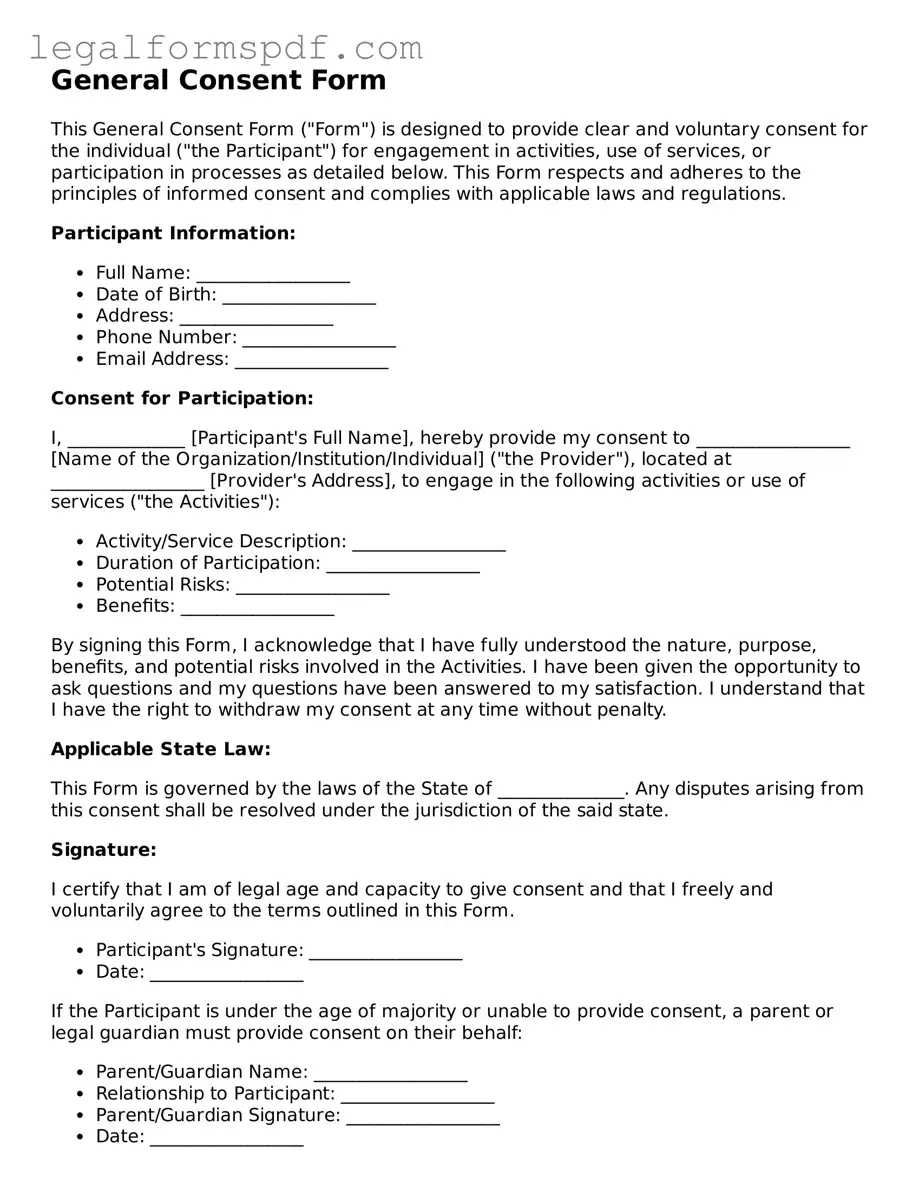What is a Consent Form?
A Consent Form is a document that is used to inform participants about the nature, benefits, and potential risks of a procedure or study, and to obtain their voluntary agreement to proceed. It serves as evidence that the participant understands the information and agrees to participate under the conditions laid out in the form.
Why is it important to have a Consent Form?
Consent Forms are crucial for ethical and legal reasons. They ensure that individuals are making informed decisions about their participation in research, medical procedures, or any other situation that might affect their health or wellbeing. This process respects individuals' autonomy and rights to make decisions about their own bodies and personal information.
What information is typically included in a Consent Form?
A typical Consent Form includes details about the purpose of the research or procedure, the procedures involved, the potential risks and benefits, confidentiality of participant information, the voluntary nature of participation, and the right to withdraw from the study or procedure at any time without penalty. Contact information for the researchers or medical professionals involved is also usually provided for participants who have questions or concerns.
Is a Consent Form always necessary?
While a Consent Form is often required for medical procedures, research studies, and other situations involving personal data or bodily autonomy, there are exceptions. For instance, in emergencies where the individual is unable to give consent, or in some cases of public interest research where obtaining individual consent is impractical, alternative legal and ethical guidelines may apply. However, these exceptions are strictly regulated.
Can a participant withdraw consent after signing the Consent Form?
Yes, participants can typically withdraw their consent at any time after signing a Consent Form. This decision should have no negative impact on them. The process for withdrawal and any potential implications should be clearly explained in the Consent Form.
What happens if a participant does not understand the information provided in the Consent Form?
If a participant does not understand the information in the Consent Form, they should be encouraged to ask questions. The researchers, medical professionals, or responsible parties are obligated to provide clear and understandable answers or clarifications. Ensuring that all participants fully understand the Consent Form before signing is a fundamental part of the consent process.
Are there different types of Consent Forms for different situations?
Yes, there are different types of Consent Forms tailored to various situations, including but not limited to medical procedures, research participation, and consent for minors or individuals who are unable to provide consent on their own. Each type of Consent Form addresses specific requirements and considerations relevant to the situation at hand.
How is consent from minors or individuals unable to consent obtained?
For minors or individuals who are unable to consent on their own behalf, a parent, guardian, or legal representative typically provides consent through a specialized Consent Form. These forms must also include an assent from the minor or individual, when possible, acknowledging their participation in an age-appropriate manner.
Who is responsible for ensuring the legality and completeness of a Consent Form?
The individual or organization conducting the research, procedure, or activity requiring consent is responsible for ensuring the legality and completeness of a Consent Form. This includes making sure it complies with applicable laws, regulations, and ethical guidelines. Often, this responsibility lies with institutional review boards (IRBs) or ethics committees, who review and approve Consent Forms before they are used.
